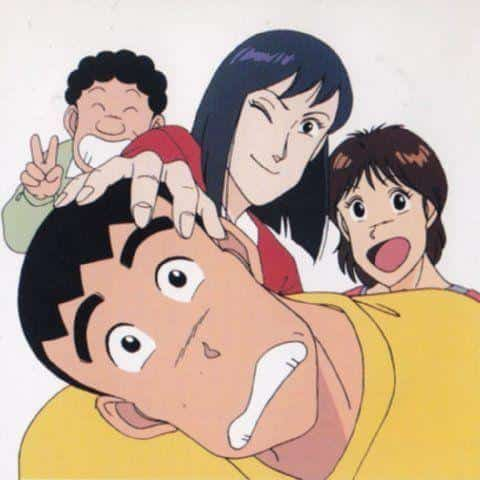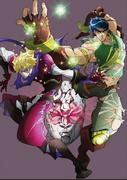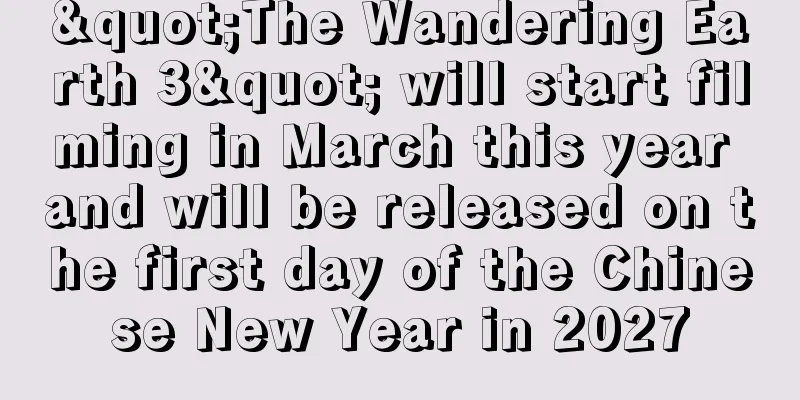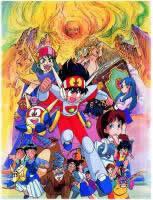Gauche the Cellist: A thorough review of the fusion of moving story and music
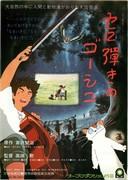
"Gauche the Cellist": Takahata Isao's masterpiece depicting the world of Miyazawa Kenji■ Public Mediatheater ■ Original Medianovel ■ Release dateJanuary 23, 1982 - January 1, 0000 ■Distribution companyDistributed by the National Liaison Committee of Film Centers and released at the Maison Franco-Japanese ■Frequencies63 min ■ Number of EpisodesEpisode 1 ■Original StoryKenji Miyazawa ■ DirectorTakahata Isao ■ ProductionOh Production ■Works©O Production ■ StoryOne day, Gauche, a cellist in the Venus Orchestra, is scolded by the conductor in front of the other musicians during practice. That night, as Gauche continues practicing in despair, a cat appears in front of him. Gauche chases away the cheeky cat with a ferocious performance, but from the next night, various animals start to visit him... ■ExplanationThis film is based on a fairy tale by Kenji Miyazawa, and was produced independently by the animation studio Oh Productions. The melody of Beethoven's Symphony No. 6 in F major, Op. 68 Pastoral plays throughout the film. The meticulous illustrations of the performance create a harmony between the image and the music. It won the Ofuji Noburo Award in 1982. ■Cast・Gauche/Hideki Sasaki・Musician/Masashi Amemori・Cat/Fuyumi Shiraishi・Cuckoo/Kaneta Kimotsuki・Baby Raccoon/Kazue Takahashi・Wild Mouse Child/Keiko Yokozawa・Wild Mouse Mother/Akiko Takamura・Viola's Daughter/Keiko Yokozawa ■ Main staff Planning: Kazuo Komatsubara Director and scriptwriter: Isao Takahata Character design and original drawings: Shunji Saito Art: Takao Mukuo Music: Yoshio Mamiya Director of photography: Toshiaki Okaseri, T. Nishimura Sound director: Yasuo Urakami ■ Main Characters -Gauche: A young professional musician who plays the cello. The appeal and evaluation of "Gauche the Cellist""Gauche the Cellist" is an animated film based on the fairy tale of the same name by Kenji Miyazawa, and is known as one of the early works of director Isao Takahata. This work was released in 1982 and depicts a deep theme in a short time of 63 minutes. Below, we will explain in detail the appeal and evaluation of this work. Depth of storyThe story of "Gauche the Cellist" is about a cellist named Gauche who, after being scolded by the conductor, meets various animals and grows in both his playing technique and his heart. The original fairy tale reflects Kenji Miyazawa's unique worldview, and depicts Gauche's process of self-reflection through his interactions with animals. The animated film takes this story even further, visually expressing Gauche's inner conflict and growth. Particularly memorable is the scene in which Goshu chases away a cat. Irritated by the cat's cheeky attitude, he chases it away with fierce playing, symbolizing the fierceness of his heart. However, through his interactions with the animals that visit one after another, Goshu comes to face his own shortcomings and grows as a person. The development of this story deeply moves the audience. Music and video in harmonyOne of the greatest attractions of this work is the wonderful harmony between music and images. The melody of Beethoven's Symphony No. 6 in F major, Op. 68, Pastoral plays throughout the film, and the music is further enhanced during the scenes where Gauche performs. Director Isao Takahata was particular about the fusion of music and images, and put particular effort into the animation of the performance scenes. As a result, a sense of realism is created in which Gauche's performance seems to jump out of the screen. Also, don't miss the beautiful background art by art director Takamura Mukuo. Gauche's room and the natural scenery are carefully drawn in detail, and together with the music they enrich the worldview of the work. The harmony between music and images is a major attraction of this work, and is an important element in drawing the audience into the world of Kenji Miyazawa. Character AppealEach character in "Gauche the Cellist" is unique and charming. The protagonist, Gauche, is a young professional musician who pursues his own technical and spiritual growth. Hideki Sasaki's voice acting is also excellent, and he realistically portrays Gauche's inner conflict and growth. Masashi Amemori, who plays the conductor, is also memorable as a strict character who accurately points out Gauche's shortcomings. The voice actors of the animals, such as Fuyumi Shiraishi as the cat and Kaneta Kimotsuki as the cuckoo, are also unique and add color to the work. The drama woven by these characters deeply moves the audience. Recognition and Awards"Gauche the Cellist" won the Ofuji Shinro Award in 1982. This award is given to particularly outstanding Japanese animation works, and indicates that the artistic and technical perfection of this work was highly praised. Furthermore, it is a work that has continued to be loved by many fans from the time of its release to the present day. This work, which brings together the dedication and talent of director Isao Takahata, is acclaimed as a work that expanded the possibilities of animation films. It has been highly praised for many elements, such as the story development that faithfully reproduces Kenji Miyazawa's original work while adding a unique interpretation, the harmony of music and images, and the appeal of the characters. Recommended points of "Gauche the Cellist""Gauche the Cellist" is recommended for those who want to experience the world of Kenji Miyazawa through animation, those who want to enjoy the harmony of music and images, and those who want to be moved by a story of the characters' growth. Below, we will introduce some specific recommended points. Experience the world of Kenji MiyazawaKenji Miyazawa's fairy tales have captivated many readers with their unique worldview and profound themes. "Gauche the Cellist" is an animated version of that worldview, and is a must-see for fans of the original work. You can feel Kenji Miyazawa's message through the interactions between Gauche and the animals. Music and video in harmonyThe harmony between music and images is the greatest attraction of this work. The melody of Beethoven's Symphony No. 6 in F major, Op. 68, Pastoral, runs throughout the film, and the music is further enhanced during the scenes where Gauche performs. Director Isao Takahata's direction, which was particular about the fusion of music and images, leaves a deep impression on the audience. Character growth storyGauche's story of growth deeply moves the audience. After being scolded by the conductor, Gauche comes to terms with his own shortcomings through his interactions with various animals, and his growth as a result resonates with many people. This is a recommended work for those who want to be moved by a story of a character's growth. An early work by director Isao Takahata"Gauche the Cellist" is an important work as one of director Isao Takahata's early works. His attention to detail and talent, which can be seen in his later works, are already on display in this work. This is a must-see for fans of director Isao Takahata. summary"Gauche the Cellist" is a masterpiece animated film directed by Takahata Isao, based on a fairy tale by Miyazawa Kenji. It has been highly praised for many elements, including the depth of the story, the harmony of music and visuals, and the appeal of the characters. This is a film that we highly recommend to those who want to experience the world of Miyazawa Kenji, those who want to enjoy the harmony of music and visuals, and those who want to be moved by the story of the characters' growth. It is also an important work from Takahata Isao's early works, and continues to be loved by many fans. |
>>: "Lucy of the Southern Rainbow" review: A moving story and beautiful visuals
Recommend
Kanna Hashimoto also becomes a goddess of wisdom! New characters of "Kaguya-sama: Love Is War" are released
The live-action movie of "Kaguya-sama: Love ...
Tencent Video's "Sweeping Dark Storm" was accused of plagiarism! The production team responded
Recently, the TV series "Sweeping Dark Storm...
Wonder Woman 2: Diana crushes a pistol with her bare hands in a 3-minute trailer
Today (February 3), the DC superhero movie "...
The second season of the famous TV animation "World Trigger" features a new character, Akira Ishida, who leads the Prince Team
The second season of the TV animation of "Wo...
New stills of the movie version of "Tokyo Avengers 2" will be released in April and June
The live-action sequel to the time-travel comic &...
Appeal and evaluation of the second season of Mupon: new adventures and deepening of characters
MooPon [2nd Season] - In-Depth Review and Compreh...
A thorough review of the pilot episode of Mitsumasa Anno's "Pepero Village Enikki"!
Mitsumasa Anno's Peperon Village Diary [Pilot...
The appeal and evaluation of "Teach Me! Jishotans!!": A fun world of learning taught by dictionary characters
"Teach Me! Jishotans!!" - The appeal of...
"My Little Sister's Behavior Has Been a Little Strange Lately" Volume 7 Limited Edition with Blu-ray Disc Review and Impressions
Detailed review and recommendation of "My Li...
Amazon's "Lord of the Rings" series premieres on September 2
Today (August 3), Amazon released the first still...
The trailer for the new Yu-Gi-Oh game "Yu-Gi-Oh Go Rush!!" was announced and will be broadcast in April next year
Today (December 18), the latest trailer of the ne...
The new trailer of the animation "Tiger and Rabbit Heroes 2" will be launched exclusively on Netflix on April 8
The original animation work "TIGER & BUN...
"Angry Boogie" review: What's the appeal of this beloved classic?
Angry Boogie - Angry Boogie -'s appeal and re...
Pokémon Pikachu's Summer Festival: What's the appeal of Pikachu enjoying the summer festival?
Pokémon Pikachu's Summer Festival - A tale of...
Ellen Ripley will not appear in Alien TV series, producer reveals
Disney and FX/Hulu announced the start of filming...
